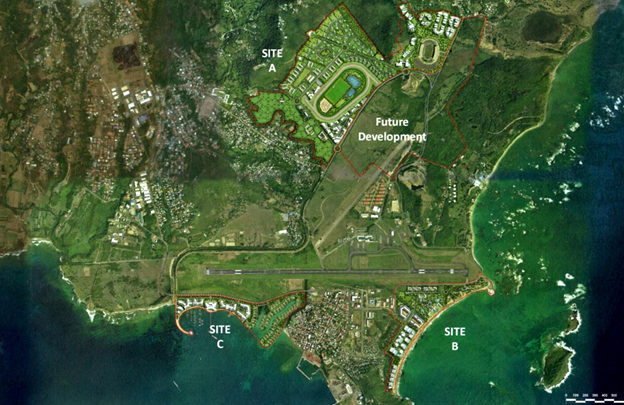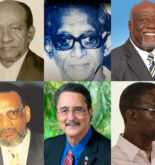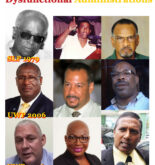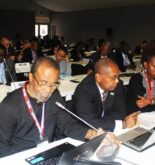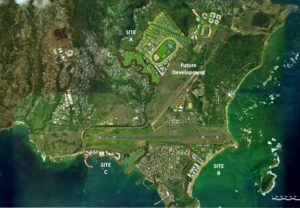
The Deal of the Century (Part 1 of 10)
For a while now it appeared that nothing much in the way of job creation and economic development was happening in Vieux Fort. Worse, with the economic recession that began in 2008 followed by the imposition of VAT, the opposite of what doctors would have ordered, businesses closed down, turning Vieux Fort into a near basket case. The popular song by Ras Isley, Nowhere to go, nothing to do, aptly described the plight of young Vieux Fortians. The town’s economic decline was best epitomized by the contraction of its port which some have blamed on SLASPA’s insistent on the use of an unreliable, often broken down and obsolete crane. Winfresh’s announcement last year of discontinuing Vieux Fort as a banana export point was just the latest example of shippers and shipping lines abandoning Port Vieux Fort. Vieux Fort wasn’t alone in its economic plight; communities across the land were crying out for relief. Indeed, the Labor Party defeat at the 2016 general elections was partly a manifestation of the nation lashing out in economic anguish.
Then, all of a sudden, as if Vieux Fort had just caught the eye of the powers above, the town and neighbouring areas were singled out for several development projects that promised to transform the economic and social landscape of the South, if not the entire island.
But for the changing of colors, the $65 million government administrative complex at Beanefield, across from Builder’s Choice, would have been well on its way. The Caribbean Grains Flour Mill at Port Vieux Fort, which promises to employ over 100 workers is near completion. The contract for the multi-million dollar Public Private Partnership (PPP), Hewanorra International Airport (HIA) Redevelopment Project, which can be expected to increase the flow of air traffic to St. Lucia, should have been awarded in January 2016 under the previous administration, but with a new government that seems to be more about stopping projects than initiating them, the future of the PPP-HIA project is in doubt.
The often contentious and controversial Citizen by Investment Program (CIP) can be expected to add further impetus to this recent spate of developments. On the west coast, in February/March 2016, the former administration sold the Sab Wisha Beach Park area of Choiseul to the European GP Group for the establishment of Sunset Bay, a US$200 million resort said to include 40 villas and about 110 rooms, and which will employ about 200 workers during construction and upwards of 300 workers when in full operation. A few months later, again under the CIP, the government signed an agreement with Caribbean luxury hotel developer, Range Developments, to transform 180 acres of Black Bay, Vieux Fort, into a luxury branded hotel with villas, a marina, and an equestrian centre.
On the east coast there is a CIP proposal under consideration to turn about 247 acres of Canelles, Vieux Fort, in the Honey Moon Beach area, into an all-inclusive resort hotel, spa, upscale residence, and a Nicklaus residence golf course. However, perhaps the mother of all developments, also on the east coast, is the more recently signed government CIP agreements with Desert Star Holdings (DSH), a Hong Kong based equine management and investment company, expected to transform over 700 acres of Vieux Fort lands into what is called The Pearl of the Caribbean that promises a marina, horse racecourse, resort hotels, luxury villas and apartments, shopping mall complex, casino, and originally a board walk and museum in the mangrove forest. The Pearl of the Caribbean was first touted as a US$1 billion investment, and then a US$2.6 billion investment, and now a US$3.0 billion investment. Regardless, if implemented the initiative will be tantamount to depositing overnight a whole city on Vieux Fort’s seaboard, and turning the area into a replica Miami Beach.
Suddenly it appeared that Vieux Fort will take off; finally Vieux Fort, for the longest while considered the last frontier, will realize its full potential, will fulfil its promise; its rendezvous with destiny had finally arrived. For to find a development of that scale, we would have to bypass the Halcyon Days Hotel of the 70s and 80s, bypass Sir John Compton’s industrialization of Vieux Fort, and enter the era of World War II when the Americans transformed the Vieux Fort landscape into a military base, and overnight turned it into a boomtown, where prostitution was rampant and Vieux Fortians felt so wealthy that they were using dollar bills to roll cigarettes and calling themselves one-day millionaires.
No one need be an economist to anticipate the potential economic impact of a project of that scale. Depending on how much the development will rely on neighbouring communities for services, labor, and consumption items, it can provide the critical mass of demand and income to allow Vieux Fort to take-off. The transformation may begin even during the construction phase. The initiative might leave no sector untouched, and the synergies with the local economy can be endless. Potentially it would be like taking the impact Halcyon Days Hotel had on the south in the 1970s and 1980s and multiplying that impact manifold.
The initial reaction of some Vieux Fortians was how selfish was their District Rep and former Prime Minister, Dr. Kenny D. Anthony, the one to whom much was given and from whom much was expected, to hold on to that secret for so long. No wonder he lost the elections. That’s the problem with Kenny, he takes too long to do things. Those with a memory of the Halcyon Days, and the Time of the Americans were probably rejoicing at the good news. Finally Vieux Fort would take its rightful place in this beautiful country of theirs. Housing developers and land owners had probably started to count their riches in rising property values. Vieux Fortians were probably envisioning a Rodney Bay (and accompanying economic prosperity) right at their doorsteps. In anticipation of taking advantage of the horse racing opportunities presented by the proposed horse race course and the prospect of raking in millions in winnings, one stable owner in Castries, pronouncing the DSH agreement a done deal, was already sourcing out thoroughbred horses in the US. Suddenly, Allen Chastanent, who, before entering politics, most St. Lucians didn’t even know existed, was smelling like a hero; and Kenny Anthony, representative of Vieux Fort for 20 straight years and prime minister of St. Lucia for 15 of those 20 years, was a villain personified. A good thing we kicked him out.
Please Don’t Call It Rain (Part 2 of 10)
![]()

